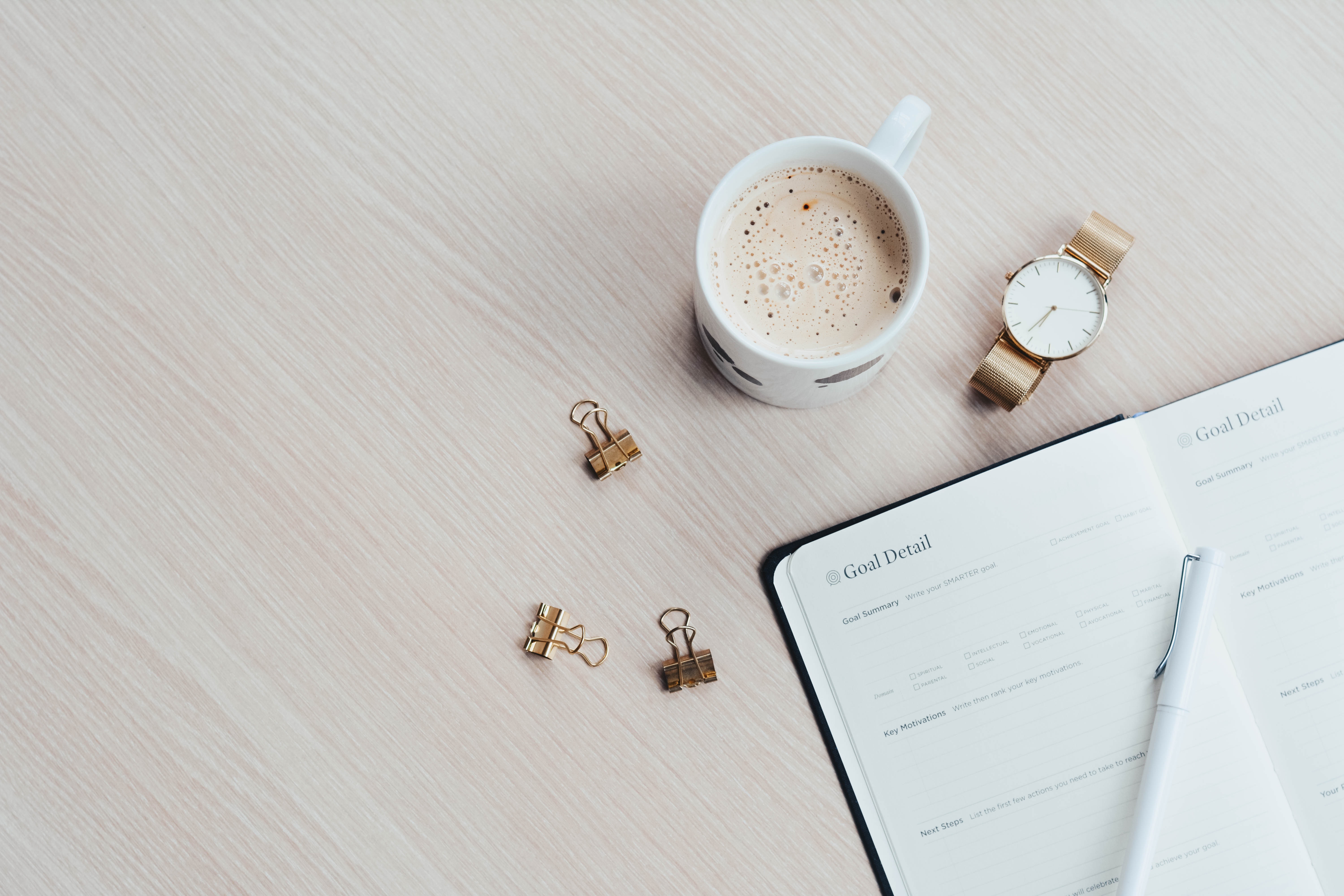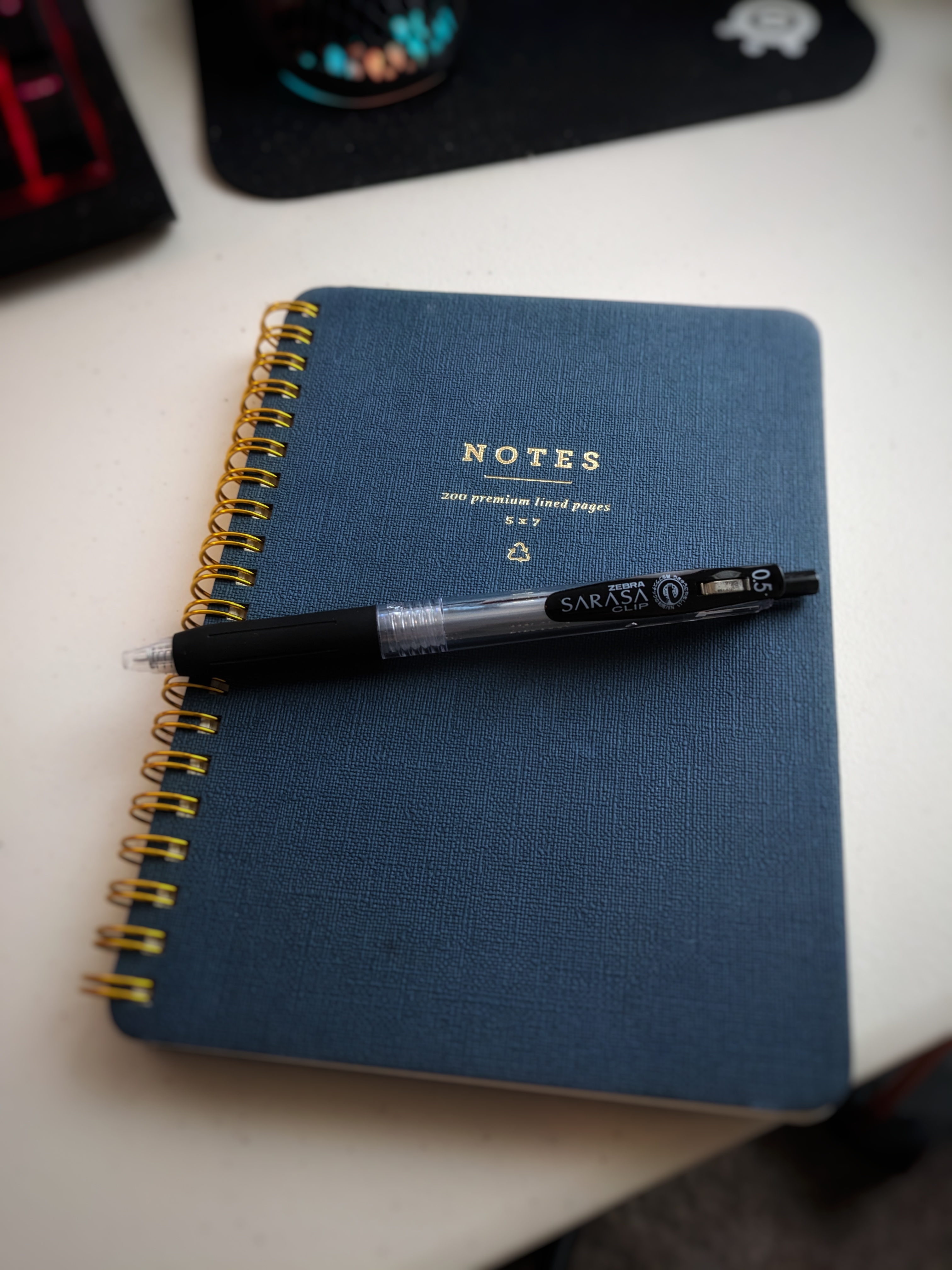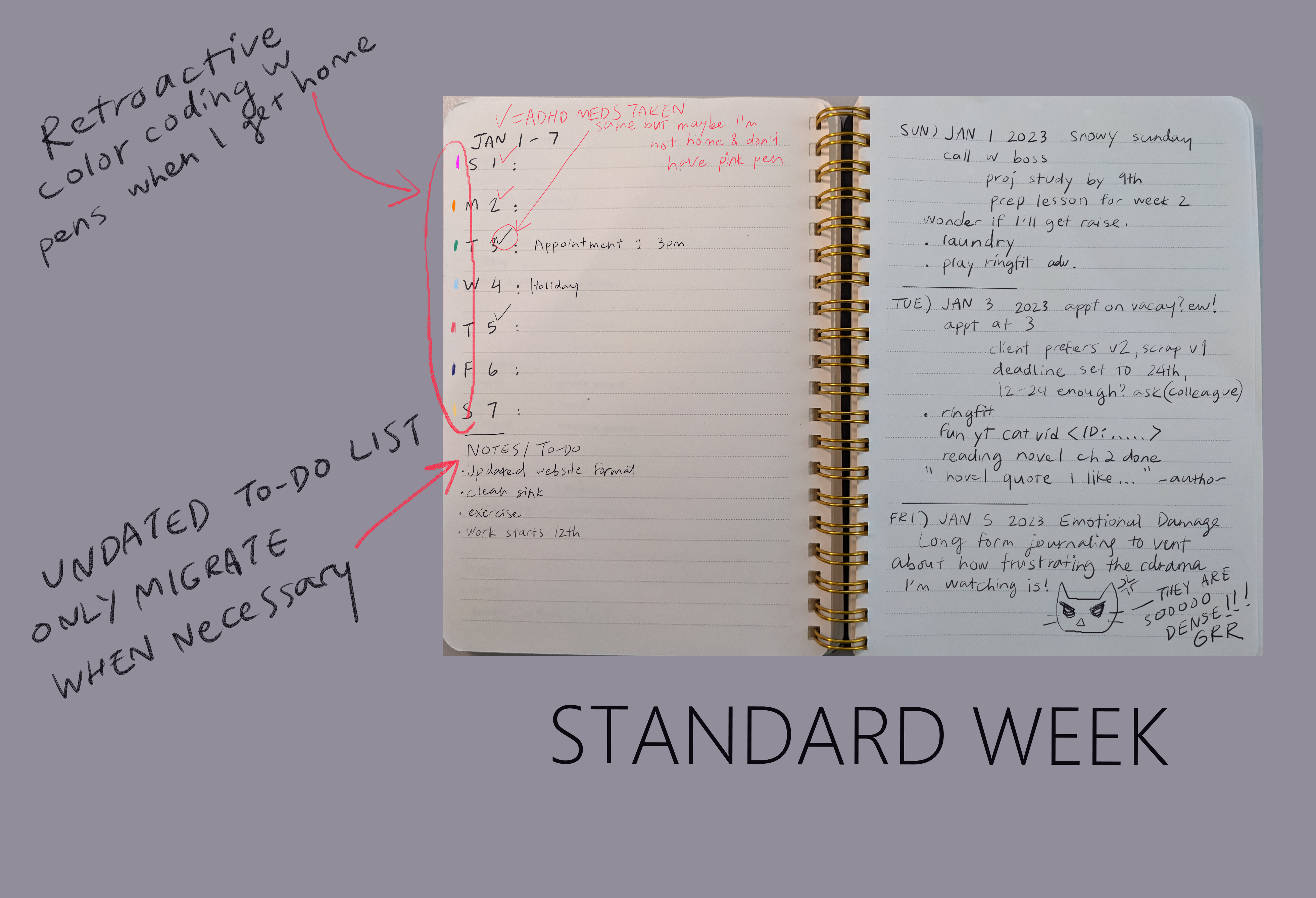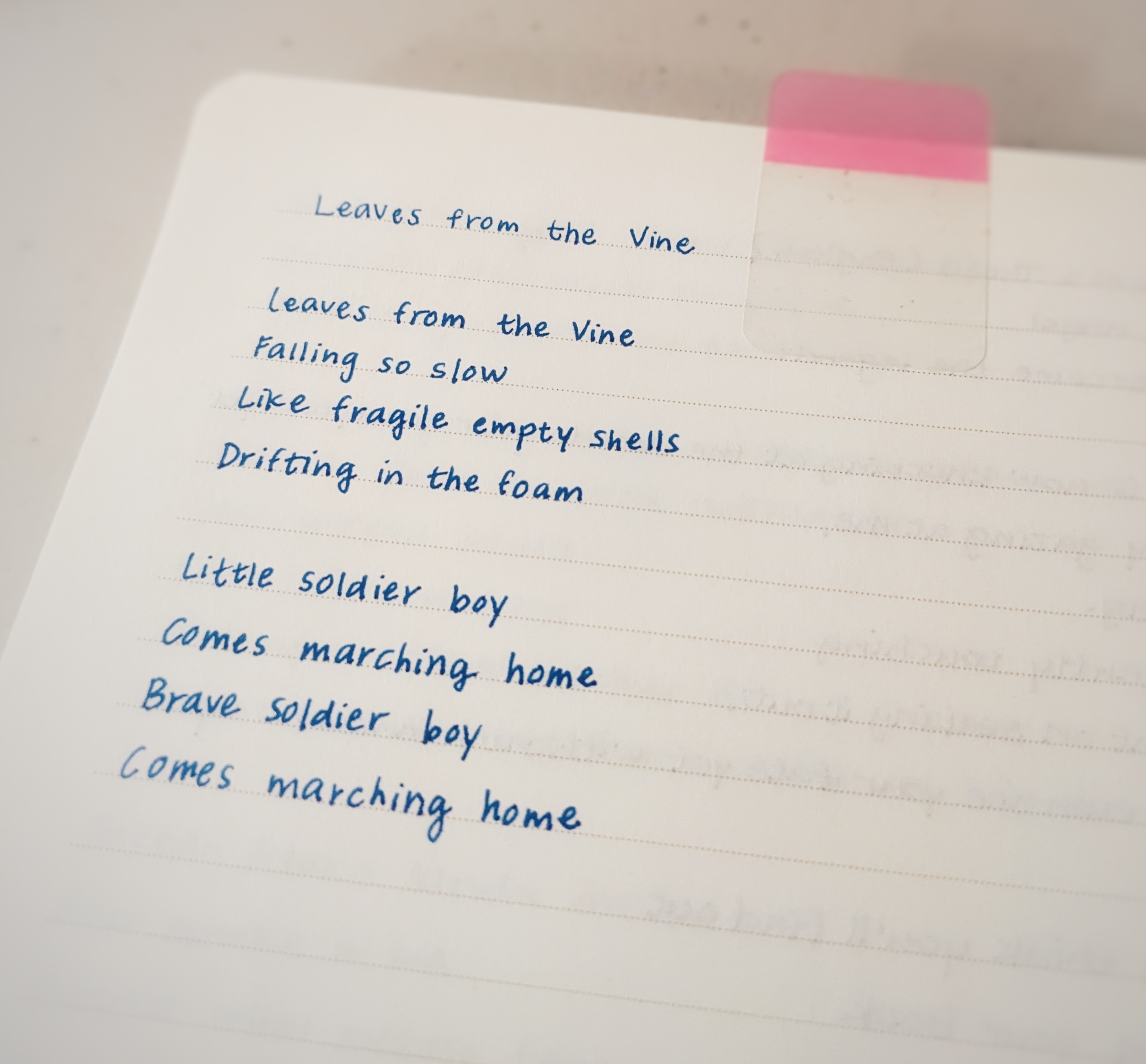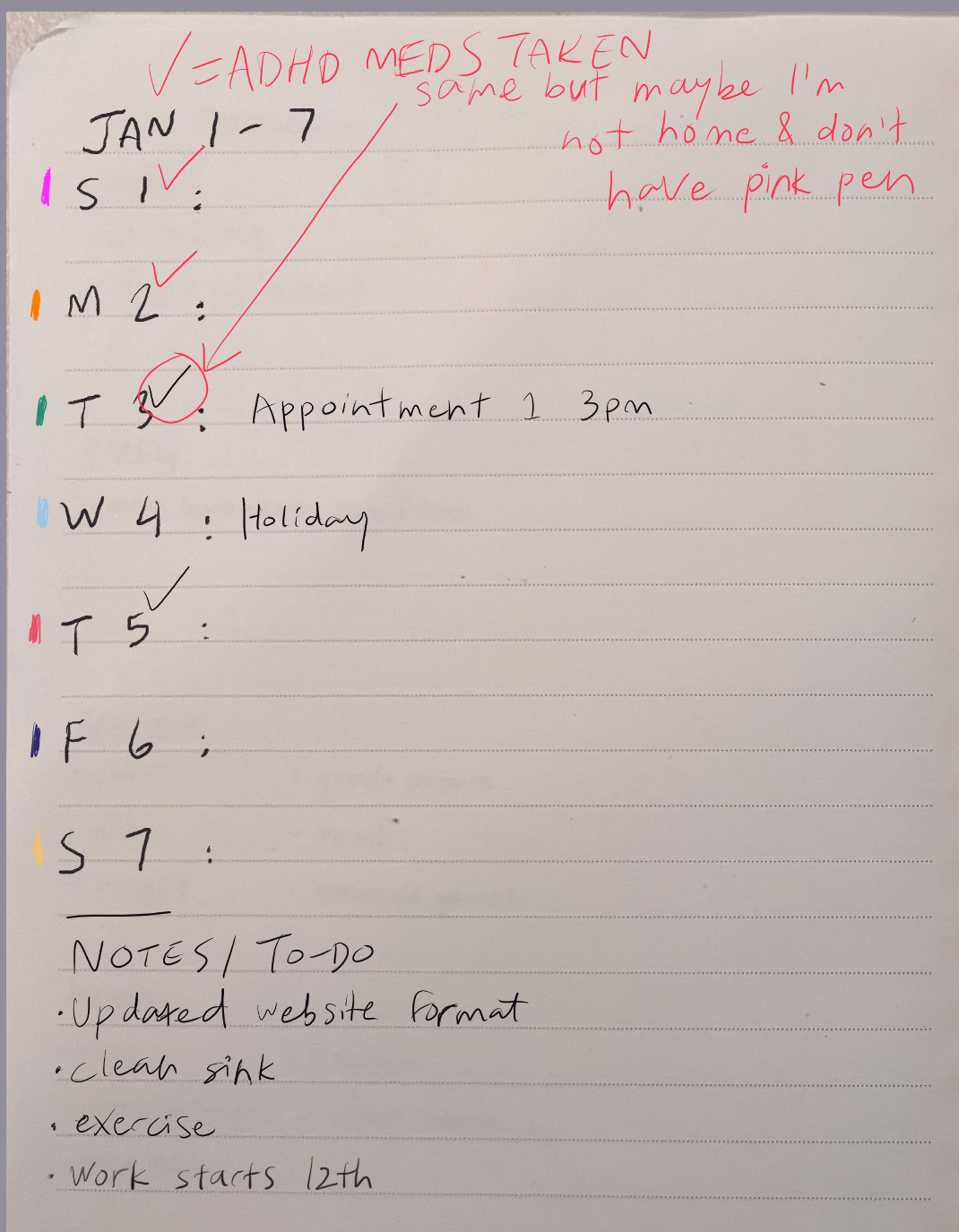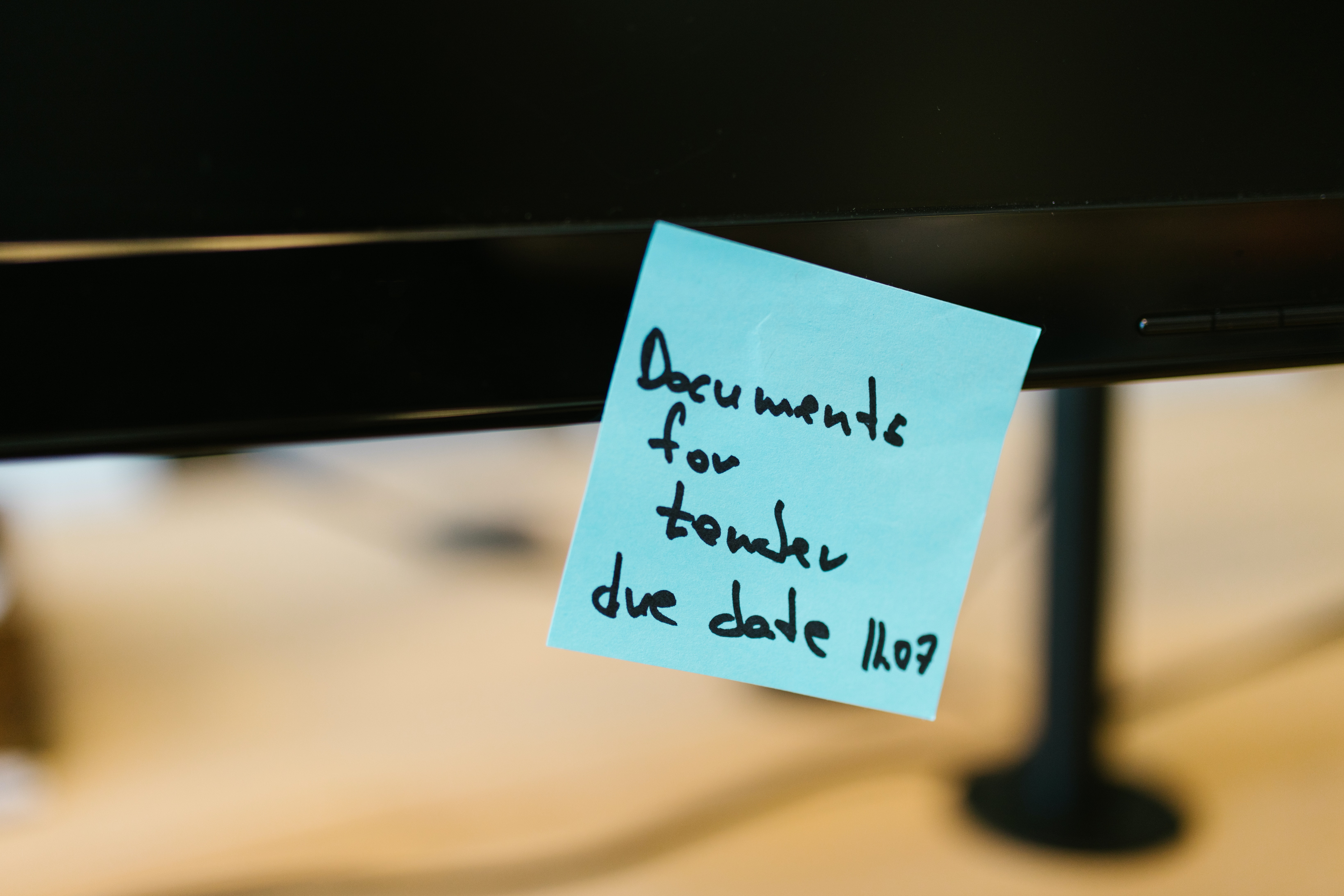ADHD Bujo Guide: The Ultimate Strategy for Chaotic Blobs
Table of Contents
(photo credit: stock image by Content Pixie on pexels.com)
I started bullet journaling in July 2018.
I was diagnosed with ADHD in September 2022.
Honestly, I should’ve known sooner.
On November 2022, my medications stabilized, and out of curiosity I had converted my former bullet journal to a personal diary, and started a new one taking into account my ADHD.
And everything finally clicked.
Is this guide for you? #
Maybe you’ve used all kinds of planners and failed, or started your bujo, made a layout, but something unexpected happens. You watch all that unused space waste away.
Or you have been writing regularly for a couple months, but depression hits. Suddenly 3 months, gone. You haven’t written a word since then, blank pages taunting you.
Or maybe you are a perfectionist and you are still too intimidated to start any bujo at all because the moment you make any modicum of a mistake, you want to rip that whole page out.
Is this you? Then this guide is for you. #
Our goal is to never quit.
We can rest.
We can take little pit stops. We can take long rest stops.
As long as we never quit, that becomes success. The more we can axe out possible points of failure, the easier it is for us to keep going.
With that in mind, we design a system where no matter how badly it goes, we can still go on.
Choose a notebook… #
Choose a notebook you will unequivocally allow it to be messy. Like, one that you will allow your first page to be scratch paper/pen test page. That is the right notebook for your messy ass (and mine). Trust.
My current notebook is a 5x7 Mintgreen brand lined journal I got from Walmart, and my pen is a Pentel Energel 0.3 recycled into a barrel of a Zebra Sarasa clip pen. If you want, you can finally pick up that notebook that’s been collecting dust on your shelf for the past 3 years that you know you won’t use it for anything else anyways. The point is, any notebook will do.
Your notebook can be dotted, lined, or graphed. Blank notebooks are rather ambitious, but if it floats your boat, go for it.
One pen + notebook will make us have ZERO barrier to bring it everywhere.
just to setup as little as possible?! #
No index.
No page numbers.
Just start.
Brief Intermission: Special Pages #
In bujo terms, special pages are called collections. I will be glossing over it for this guide. If you’d like, you can read more about it here.
For pages you want to see again eventually, dog ear them. For pages that you would flip to often, use a thick and sturdy post-it flag to get to it instantly, like this.
(my favorite poem from one of my favorite shows)
If you don’t have any formats you prefer yet, I encourage you to start with this simple layout. You can add/remove items as you go.
Style 1: Week Overview #
This is optional.
Lay it out for weeks where some things are certain to happen in advance. Those are weeks with appointments, birthdays, holidays, deadlines.
Each day, you can write a short “thing I did today I am happy about”. Today for me, “wrote bujo guide” would suffice. And for last week, my favorite one was “made it out of escape room with M!”
Well, that’s pretty much it!
Note: Color is optional, but some folks do a much better job reading color coded material, and in that case I highly recommend it. I heavily prefer color, but if I want to start something outside it isn’t too practical, so I have chosen to compromise by retroactively color coding on the side.
Anything current/near future goes into the To-do/Notes section.
You can still do a monthly log Ryder Carroll style if you wish. I had used that layout for 2019-2022 and found it to be very reliable. Although I have modified my layout here to suit me better, the core concept is still the same. The old layout I had used is shown below, made in a A5 Dingbats Bullet Journal with 30+ lines.
Info on this old layout if you prefer this format: post 1, post 2
Disclaimer: I did not abandon this format because it was bad. I had abandoned it because I had found what suits me better I started my ADHD medication. I am not sponsored by any company, nor am I selling any products. If you found this old method by chance and loved it, I encourage you to skip this guide and just follow my old posts.
Style 2: Individual Dated Entry #
This is optional.
Dated Entries are great for days where we need to elaborate more than one sentence which won’t fit on the weekly overview.
Use this to help free space in your brain. This is basically somewhere between Ryder’s rapid logging system, and the commonplace book system. Use bullets for the day’s tasks, and nothing for everything else. Add other keys if needed, if not keep it simple.
Cover contents of a phone call or a nice quote from a book. Write a full sentence to express your anger at shows. Go on.
Any rolling tasks can go into the to-do/notes section. The important part is to be honest with ourselves and let ourselves decide if tasks belong in weekly or daily.
Wait. Both sides are optional? How? #
Short answer: Yes.
Long answer: Each week, one of these 4 things will happen.
Possibility 1: You have a week where you only use the “weekly” layout, and write no dated entries.
Possibility 2: You have a week where you only write dated entries, with no advanced plans. You can still mimic the single line entry for weekly layout on the daily (Ex: Jan 3 2023 I did this).
Possibility 3: You have a week where you need a weekly overview for appointments + dated entries for things that needed to be remembered/done
Possibility 4: You have a week where nothing eventful happens (ex. being sick). Don’t worry. Just write nothing.
Our Core Motto: Observation, not Obligation #
If you are a chaotic blob like me, do not even bother to attempt writing daily! This is the easiest way to cause burnout. Honestly, some weeks are just same old routine and there’s nothing to add that’s of use. Be honest with yourself and skip those days, and focus on the days where things do turn up, write more for them.
Bullet journaling should never be a chore, and should always be a tool. The moment that it becomes a chore, it is important to stop and evaluate, and cut off things we don’t need. If this post gets some reception I will probably cover this in-depth at a later point.
3 Ways to Handle Important Reminders: ADHD Edition #
I used to put all my reminders in one place and tried to handle it like a normal person.
spoiler: that didn’t work.
So here is what’s working right now:
(photo credit: stock image by RODNAE Productions on pexels.com)
#1, Sticky Note on most relevant location: Important reminders can be pasted on your monitor, fridge door, bathroom mirror, somewhere you can constantly remind yourself of that thing. Wherever is best, paste that note there. For example, my dental appointments that are too far away will go on my sticky note, on my monitor. On the week of the event, I’ll copy it into my journal.
Other examples:
If you need to clean out your fridge, paste that note on your fridge!
If you forget to turn off the lights on the way out, paste that note on your door!
If your lips are dry in the morning, remind yourself to apply lip balm on your bathroom mirror!
#2, Whiteboard: I have a whiteboard at home I glance at every day before I head out the door, where by that time, my journal is neatly packed away to go out with me. For example, I have a gift bag for my friend’s birthday sitting in my closet, ready to leave with me in a few weeks. On her birthday, the whiteboard will remind me to actually take out that gift. There is no way I am looking at my journal right as I am changing my clothes and about to leave. It is what it is.
#3, Future log page: You can have a dedicated future log page, but personally, future log pages now serve as my backup inside my journal. Post ADHD diagnosis, I have accepted simply accepted that I am going to forget to look at this page. lol
What about for busier weeks? I need more space! #
This is the part where we benefit from not setting up anything in advance. We utilize dynamic spacing as we go. You can make each section as large as you want individually, or as little as you want. You can have 7 lines on one day and just 2 lines on the next, if that is what you need. If you are even more uncertain than that, just use a pencil and move stuff around. It won’t be the end of the world to be using a pencil, especially on a journal we have agreed upon it to be messy. That’s why I love it.
You can have more than one journal. #
(photo credit: stock image by Polina Kovaleva on pexels.com)
Do what works for you.
I consider myself to be a rather creative person. But at this point in time, my bullet journal is now no more than a tool to get my shit together. Letting other notebooks do other tasks will help our bujo stay focused on the now.
Some of us have a need to reflect on personal matters in a diary at home, or to put our creative projects in an art journal.
I now know for sure that I do.
They can remain separate from the bullet journal. As mentioned above, I used to write diary entries in my bullet journal, but now separating it, and leaving personal entries at home makes me less nervous about the chance of somebody reading my journal when I am out in public, and it puts me at ease.
You made it to the end! #
(photo credit: stock image by George Dolgikh on pexels.com)
Thanks lots if you’ve read it all the way at the end. I appreciate your support, and I hope I have helped you. If you personally didn’t need the guide but you think a friend or family might find it useful, feel free to share it to them. Once again, I am not selling anything. I’m just throwing this out into the void and sharing my experiences in the hopes that it will help a person or two. If it did, please let me know :) If you have any questions, feel free to leave it in comments, my contact form, or the reddit post I am submitting this piece at. I will try to answer them in my future posts.
Until next time!
